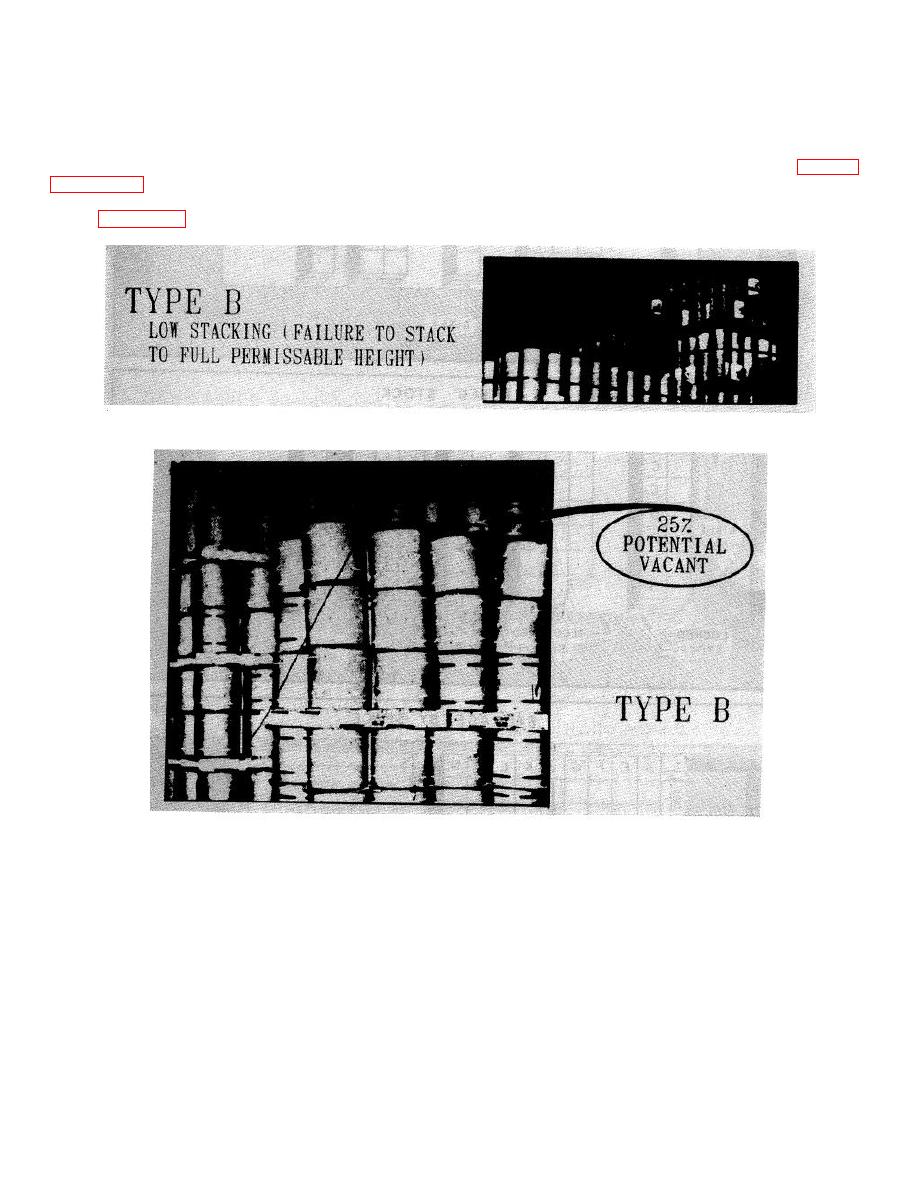 |
|||
|
|
|||
|
Page Title:
Figure 2-54. Type B Potential Vacant Space |
|
||
| ||||||||||
|
|
 TM 38-400/NAVSUP PUB 572/AFMAN 23-210 MCO 4450.14/DLAM 4145.12
b Type B, Low stacking. Type B potential vacant space occurs as a result of low stacking, that is,
failure to stack to full permissible heights considering the floor load, height of roof rafters and ceiling joists, commodity
characteristics, and strength of package. Space is 100 percent occupied when the low stacking is caused by limitations
of floor load, height of roof rafters and ceiling joists, commodity characteristics, and/or strength of package (see fig 2-53).
Figures 2-54 provides an example where there is 25 percent type B potential vacant space because if the pallets in the
foreground were loaded in the same way as those in the rear, the foreground pallets could be stacked eight high instead
of six. Figure 2-55 shows type B potential vacant space and the space that can be recovered through rewarehousing.
Figure 2-53. Low Stacking-Type B Potential Vacant Space
Figure 2-54. Type B Potential Vacant Space
2-56
|
|
Privacy Statement - Press Release - Copyright Information. - Contact Us |